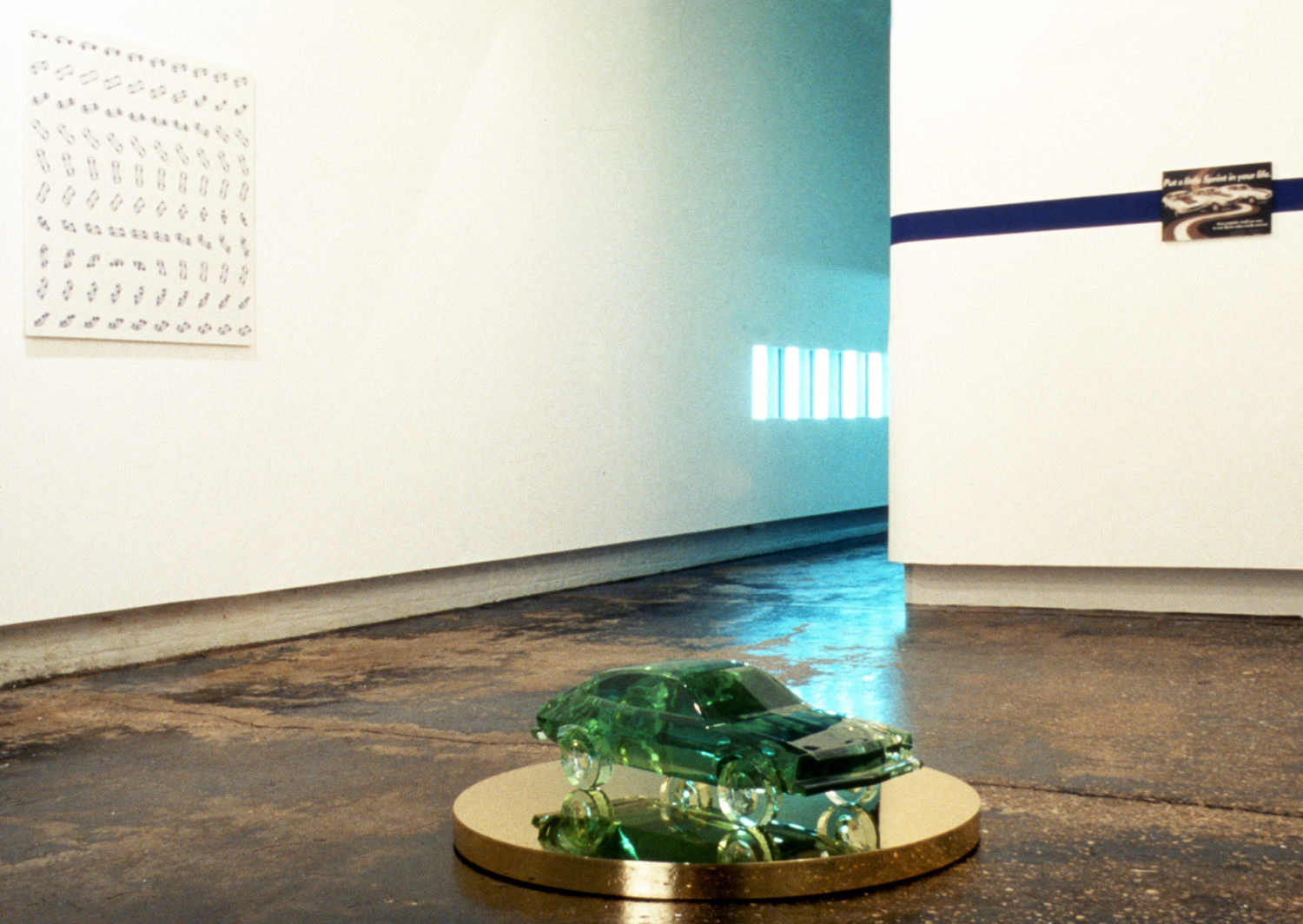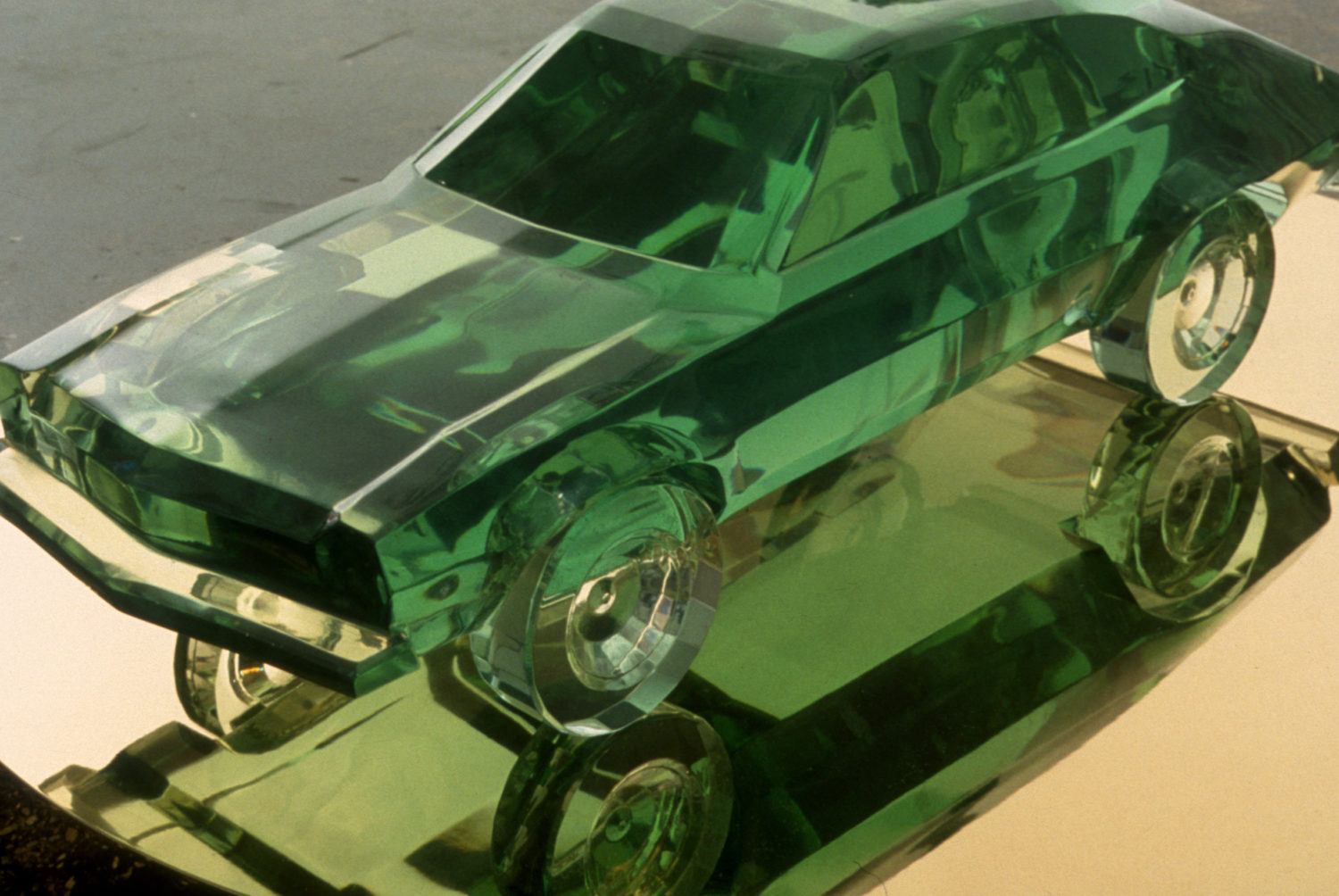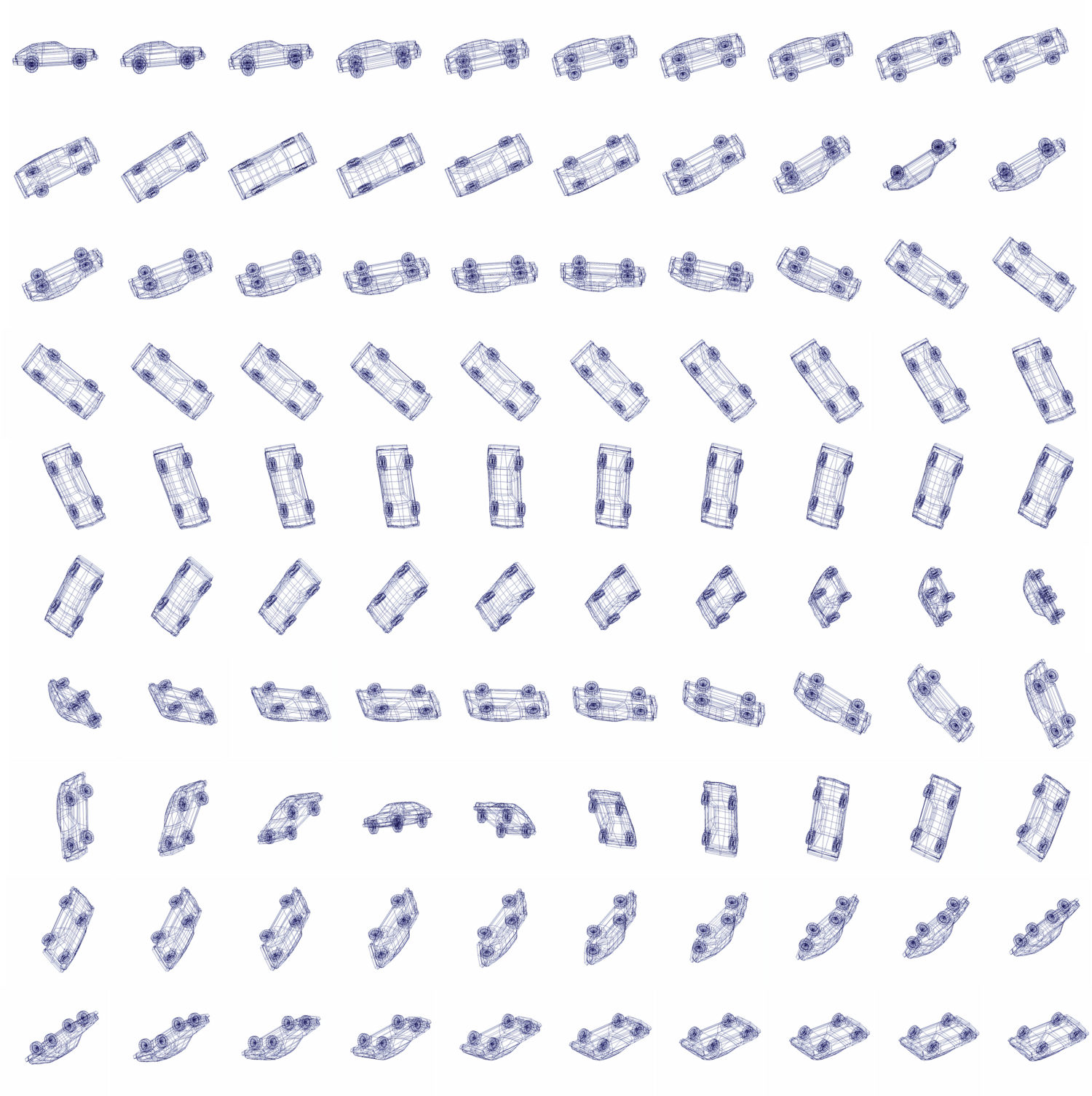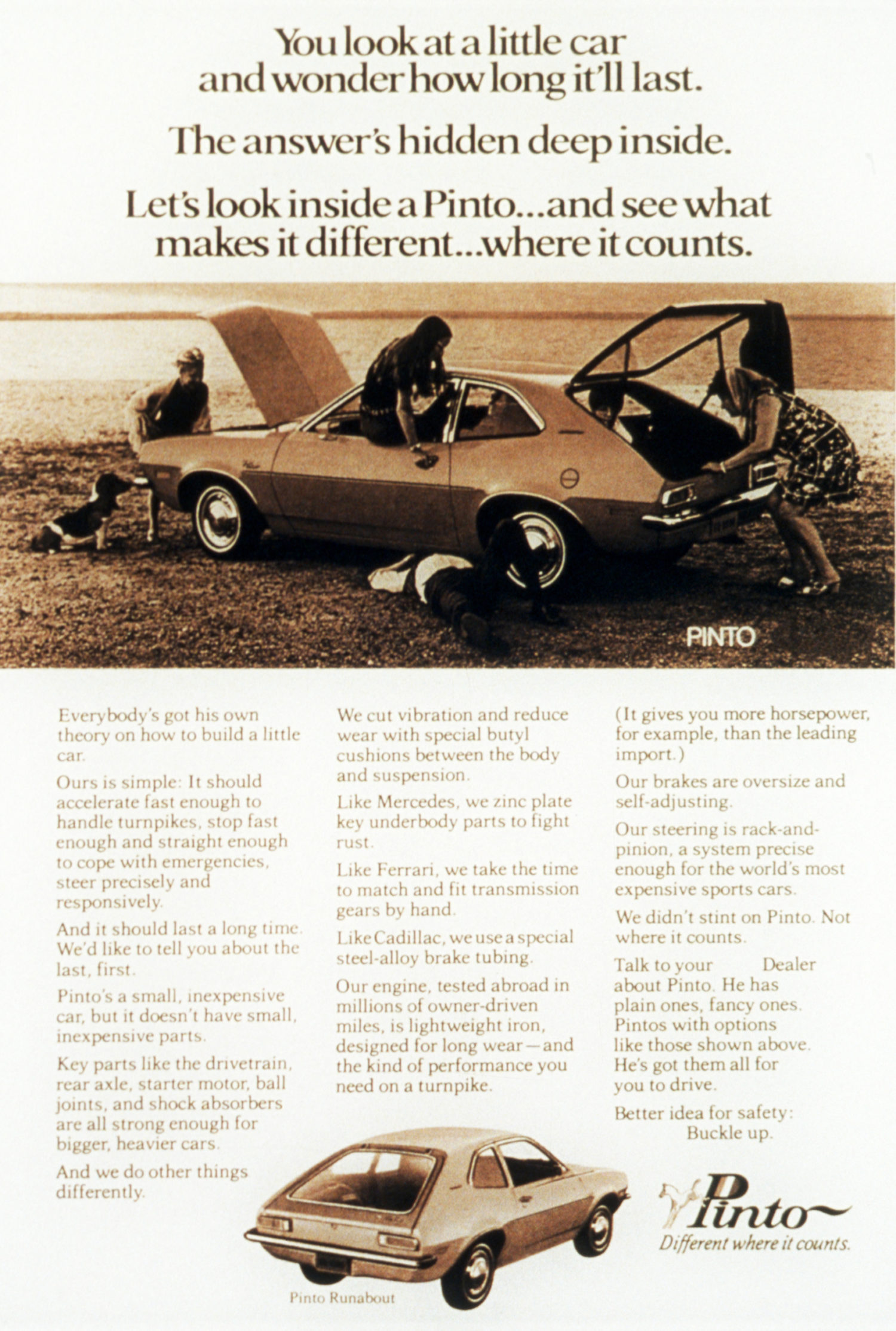
Cast and polished acrylic
10” x 31” x 11”
Base: welded and polished brass
2” x 36”
Installation view

Cast and polished acrylic
10” x 31” x 11”
Base: welded and polished brass
2” x 36”

Cast and polished acrylic
10” x 31” x 11”
Base: welded and polished brass
2” x 36”

digital C-print
mounted on Plexiglas
36″ x 36″

10” x 8”
digital C-print
mounted on Plexiglas

10” x 8”
digital C-print
mounted on Plexiglas
Sara Meltzer Gallery
New York
“Renouncing the hyperbolic ambitions of projects critical of modernity for an ironic reflection on teen years spent in fetishization of vehicles designed for the death-drive, negative utopianism of American suburbs, Schafer refers to the ways in which fantasies of quiet private comforts and minimal public appearance produced a culture of teen sexuality and teen rebellion that turned around the space and the dreams of the automobile. Violence was always ready to explode, whether in the poor design of an automotive deathtrap, or in the self-destructive rages of objectless teen longing. The Ford Pinto as death-drive machine also named suburban nostalgia for the lightness of the wild ponies and the emptiness of a frontier – the projection of a nomadic life on the plains. As politically and ethically incorrect as the Pinto may have been, it looks rather humble next to the Ford Expedition, whose bloated body lumbers into the twenty-first century, not on the light swift feet of a wild pony metaphor, but rather on the dreams of a new and improved heroic project of discovery and conquest.”
Catherine Liu
LA. CA. 2000
A Death in the Family
The magazine advertisements promoted the Ford Pinto as an economical, practical, and family car that could be adapted to a diverse set of lifestyles emanating from within the suburban milieu. The ads featured images of the nuclear family interacting with the car which included babies, daughters, and sons as they were enjoying the new compact and convenience of a small car that could be easily personalized or even worked on by the owners. The Pinto was not only part of the Ford family but was also part of another type of family; Pinto and Mustang were also breeds of horses which can be associated with teen sexuality, the western frontier, the suburbs and freeways. The Disney-like images of families doing chores, getting groceries, on a picnic, or hanging out, were all domestic activities that would be more enjoyable with the spry little Pinto. But in spite of the Pinto being anchored to a family structure through the advertisements, the Pinto was actually destroying the American family as it came to symbolize a death of the family.
In order to compete with the ensuing Japanese and European market of Nissan, Datsun, and Volkswagen, the Pinto was pushed through production and therefore was not fully prototyped. Its production schedule involved the fastest amount of time for any car to go from drawing board to street. The new concept of the compact had an effect on the construction of American patriotism and capitalism, its commercial appearance was to help secure the Detroit amalgam and it’s center of power within the Western market. This was the early seventies; a post-Vietnam moment where scaling down was mixed with the transition from one distinct phase of capitalist development to a new one.
Henry Ford was known for his development of a distinctive type of labor process that involved mass production based on the moving assembly-line techniques operated by semi-skilled labor of the mass worker. Fordist assembly lines were the ultimate expression of the capitalist necessity of achieving a continuous production flow in large-scale industry. “Fordism” incorporated “Taylorism” where Taylor advocated bureaucratization of the shop floor through time and motion study as a means to solve the problems of coordination and reintegration raised by the increasingly complex division of labor. Modernism had become closely linked to capital accumulation through a project of Fordist modernization characterized by rationality, functionality and efficiency. The model of Fordist capitalism and the Taylorist mass production generated a different spatial model of a town that was organized according to the functional needs of the factory. This new model did not follow traditional layouts and the new standardized town generated among other things a crisis in congeniality. The “crisis in Fordism” therefore leads to a crisis in the Fordist town creating social conflicts that drastically reduced the quality of life. The economic, political and ideological dimensions of the crisis crystallized into an explosive mixture. The Pinto had a design flaw that caused it to explode into a fireball when it was hit from behind even at a slow speed. There were hundreds of deaths with the first fatality being a young woman in 1972. The fiery gas-fueled fire and explosion would fatally injure the occupants and destroy the car. The Pinto’s fuel tank would be ruptured by a puncture caused by the rear axle. This would force gas and fumes to be emitted into the interior of the car and at the same time jamming the doors and preventing them from opening.
The Double Illusion of the Mystic Linguistic Event is in one-fifth scale, which is a standard scale that automotive designers work with for prototypes. Starting with a digital file, the image of the car was translated to polygonal data generating a wire frame model. A three-dimensional foam pattern was milled on a five-axis mill from the digital file maintaining all of its polygonal geometry. The facets created by the polygons conjured up images of a jewel, a precious stone. The car rests on a round polished brass plated plinth not unlike the full scale rotating platform display bases used in international auto shows that herald the new concept car. Sometimes objects can be read as images, they project their image onto us as we project onto them at the same time, thus an image screen is formed where they meet. The Double Illusion of the Mystic Linguistic Event reflects itself and endlessly returns into an infinite prism of exploded and faceted images that may evoke beauty as much as noise.
The Family Affair series was scanned and sized at roughly 8 x 10. The name “Ford” in each Pinto ad was removed and then sepia-toned to prompt nostalgia for the old west with horses, dirt and leather. Ford was the father of many things, and was located historically within the birth of Modernism. The death of the father, the family, the town, all suggest that the consumerist and patriarchal patterns of Modernism and popular culture are deeply woven into the fabric of our culture. As Catherine Liu said: “it looks rather humble next to the Ford Expedition, whose bloated body lumbers into the twenty-first century, not on the light swift feet of a wild pony metaphor, but rather on the dreams of a new and improved heroic project of discovery and conquest.”